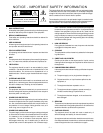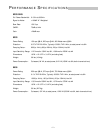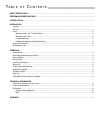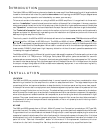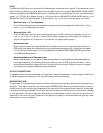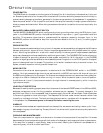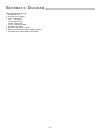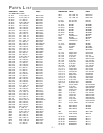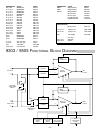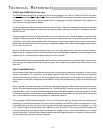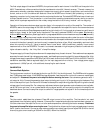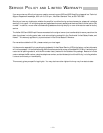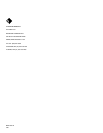– 2 –
INPUT
The 9303 and 9505 have input jacks for both balanced and unbalanced input signals. The unbalanced inputs
use conventional RCA phono jacks. When using the RCA inputs, the rear panel BALANCED/UNBALANCED
switch must be set to the UNBALANCED position. The balanced input jacks are dual function connectors which
accept 1/4" TRS (Rip Ring Sleeve) phone or XLR plugs. Set the BALANCED/UNBALANCED switch to the
BALANCED Position to use these jacks. The connector pin-out is printed on the rear panel of the amp.
Balanced Input: 1/4" Tip Ring Sleeve
The 1/4" balanced input jack is connected according to conventional usage with the Tip high (+), Ring
return (–) and the Sleeve ground shield.
Balanced Input: XLR
The XLR balanced input jack is connected according to the IEC International Standard, with pin 2
high (+), pin 3 return (–) and pin 1 ground shield. When preparing to use the amplifier, check the
output configuration of the source unit to maintain the proper signal polarity.
Unbalanced Input
Many popular mixers use unbalanced RCA phono jacks for the monitor outputs. For short cable runs
RCA audio patch cable can be used without any system performance penalty. Check the mixer specs
for the maximum cable length it will drive. Make sure the BALANCED/UNBALANCED switch is set
for UNBALANCED operation.
Unbalanced Source with Balanced Input
Better noise rejection for long cable runs can be achieved by using a twisted pair balanced cable from
the unbalanced source. At the source end of the cable, connect an RCA plug with the return (–) wire
and shield connected to the ground shell of the plug. Wire the plug at the amplifier end of the cable
the same as for the regular balanced input connection.
OUTPUT CONNECTIONS
The speaker output connectors are dual binding posts. These binding posts will directly accept 12 AWG wire
or banana plugs and are spaced on 3/4" centers to accept dual banana plugs.
MONOPHONIC USE
For systems with high power requirements, the amplifiers can be configured for single channel bridged mono
operation. To bridge the amplifier, set the rear panel STEREO/MONO switch to the Mono position; use only
the left channel input, and connect the speaker to the red output binding posts. When the amplifier is bridged,
the output is floating. Any speaker which requires a common ground from the amplifier output cannot be used
in this application. Since a bridged amplifier shares the load between the two channels, the amplifier will
effectively drive half of the load. Therefore, for bridged mono operation we recommend using an eight ohm
load as the minimum impedance.




